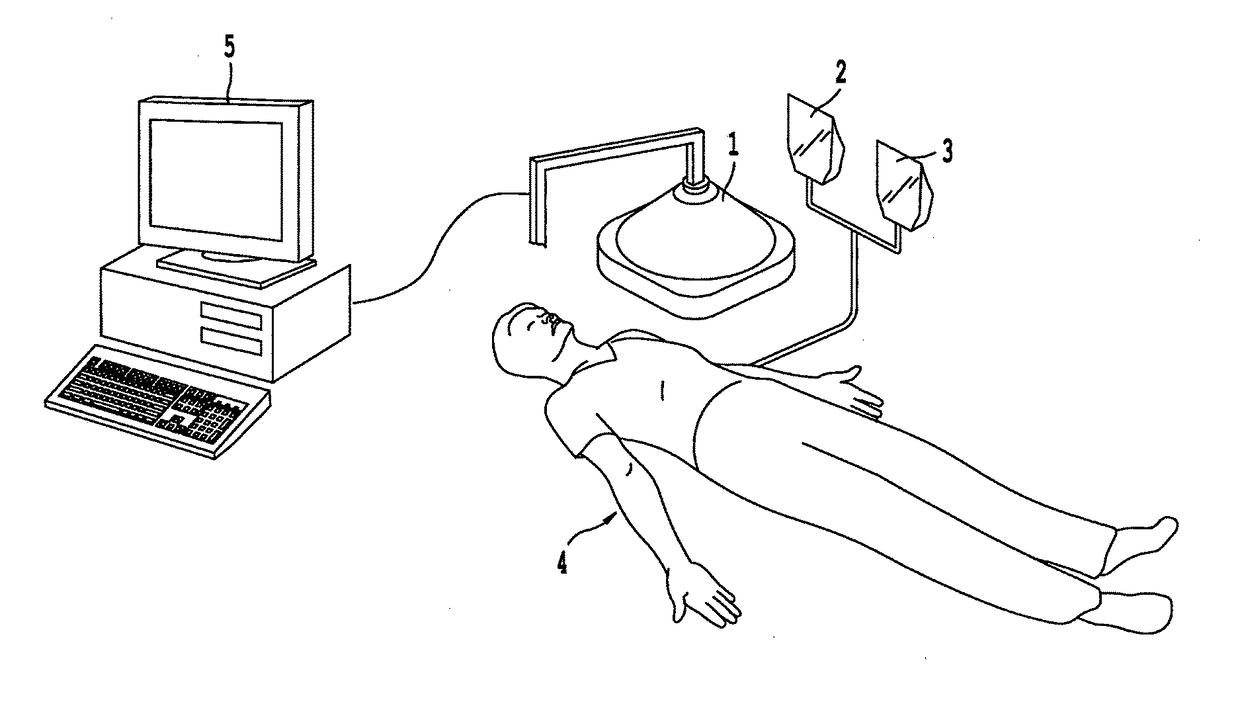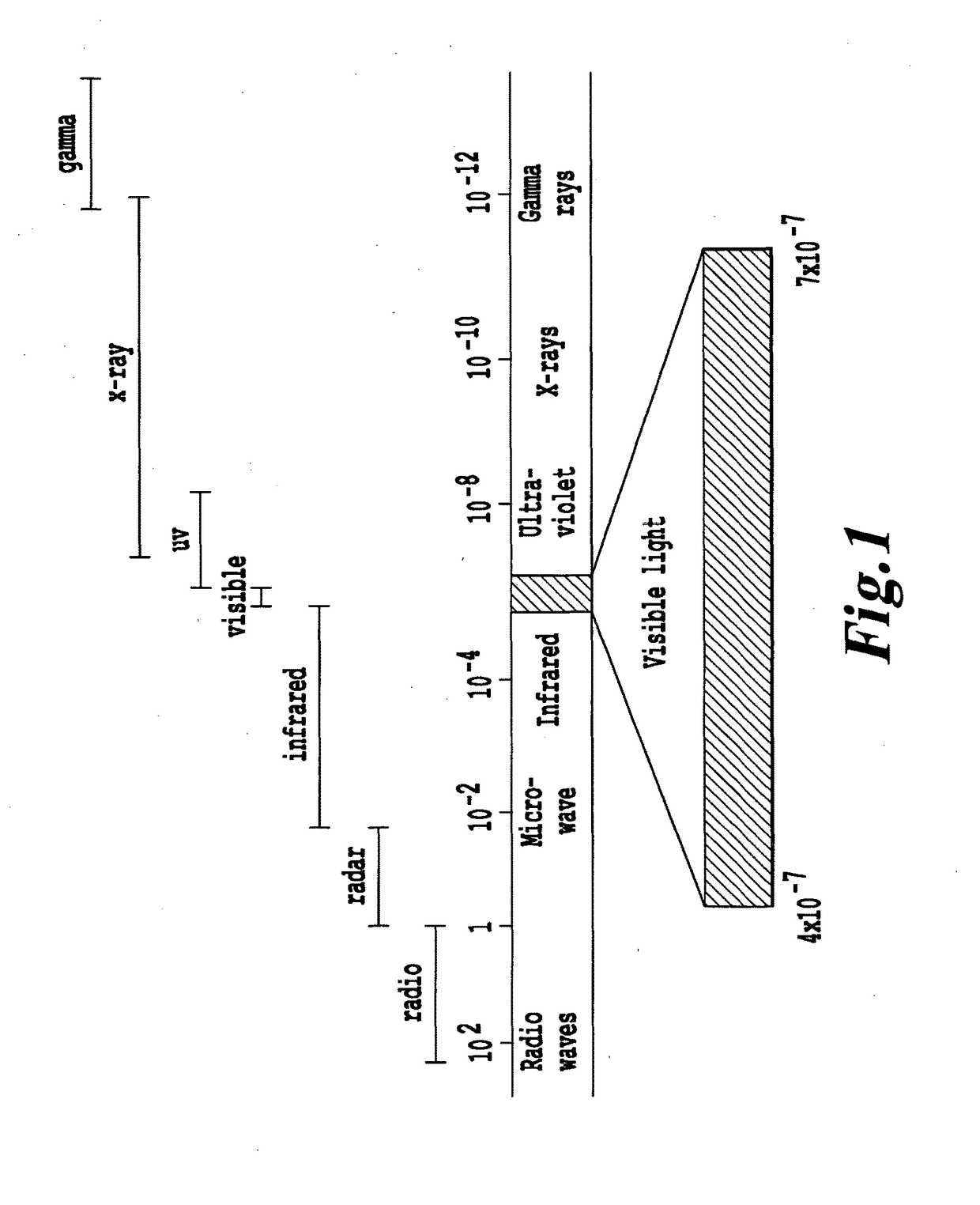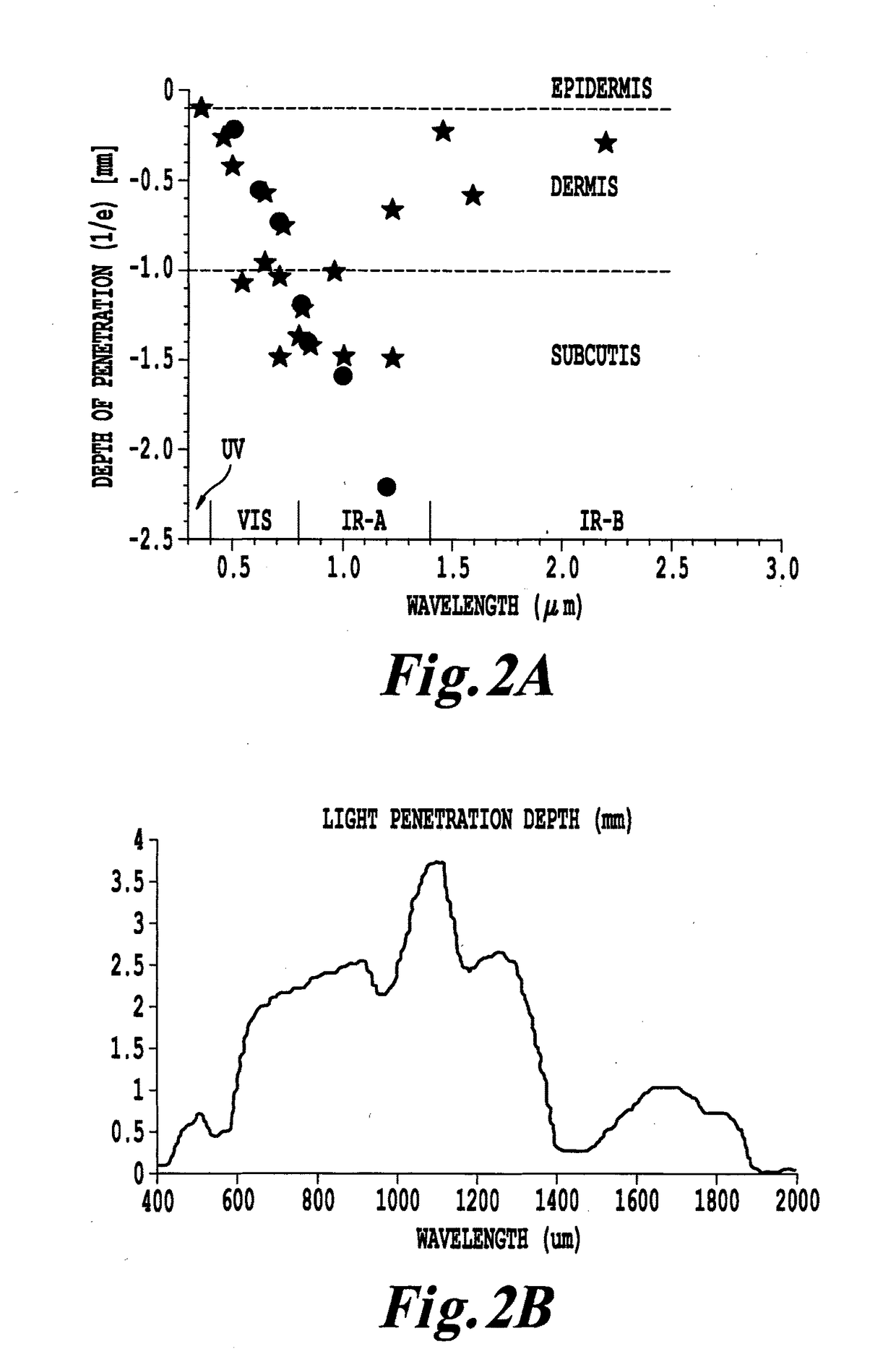Non-invasive systems and methods for selective activation of photoreactive responses
a photoreactive response and non-invasive technology, applied in the field of non-invasive systems and methods for selective activation of photoreactive responses, can solve the problems of inability to perform photobiomodulation in a region deep within thick tissue without surgical invasion, complex wavelength, intensity, duration and treatment interval,
- Summary
- Abstract
- Description
- Claims
- Application Information
AI Technical Summary
Benefits of technology
Problems solved by technology
Method used
Image
Examples
examples
Preparation of Silver Nanoparticles
[0579]Silver (or gold) colloids were prepared according to the standard Lee-Meisel method: 200 mL of 10−3 M AgNO3 aqueous solution was boiled under vigorous stirring, then 5 mL of 35 -mM sodium citrate solution were added and the resulting mixture was kept boiling for 1 h. This procedure was reported to yield ˜1011 particles / mL of homogenously sized colloidal particles with a diameter of ˜35-50 nm and an absorption maximum at 390 nm. The colloidal solutions were stored at 4 ° C. and protected from room light. Further dilutions of the colloidal solutions were carried out using distilled water.
Fabrication / Preparation of Metal Nanocaps
[0580]One approach has involved the use of nanospheres spin-coated on a solid support in order to produce and control the desired roughness. The nanostructured support is subsequently covered with a layer of silver that provides the conduction electrons required for the surface plasmon mechanisms. Among the techniques ba...
PUM
 Login to View More
Login to View More Abstract
Description
Claims
Application Information
 Login to View More
Login to View More - R&D
- Intellectual Property
- Life Sciences
- Materials
- Tech Scout
- Unparalleled Data Quality
- Higher Quality Content
- 60% Fewer Hallucinations
Browse by: Latest US Patents, China's latest patents, Technical Efficacy Thesaurus, Application Domain, Technology Topic, Popular Technical Reports.
© 2025 PatSnap. All rights reserved.Legal|Privacy policy|Modern Slavery Act Transparency Statement|Sitemap|About US| Contact US: help@patsnap.com



